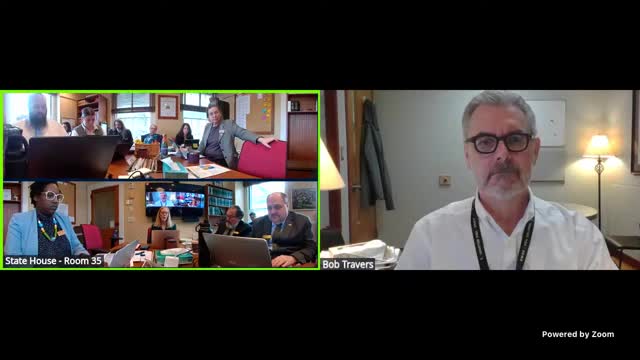Vermont school board faces scrutiny over new CTE governance structure
March 22, 2025 | Commerce & Economic Development, HOUSE OF REPRESENTATIVES, Committees, Legislative , Vermont
This article was created by AI summarizing key points discussed. AI makes mistakes, so for full details and context, please refer to the video of the full meeting. Please report any errors so we can fix them. Report an error »

In a recent Vermont government meeting, discussions centered around proposed changes to the governance structure of the statewide Career and Technical Education (CTE) school district, raising significant concerns among education stakeholders. The current bill suggests a board composed of 15 voting members, all appointed by superintendents from various service regions, with the statewide superintendent serving as a non-voting member. This arrangement has sparked debate about the appropriateness of including the superintendent on the board, given their distinct roles and responsibilities.
Critics argue that having the superintendent as a board member could undermine the democratic process of electing school board members, especially since these elected officials will be responsible for funding the district's operations. The Vermont School Boards Association (VSBA) emphasized the importance of maintaining a democratic approach to school governance, highlighting that the proposed structure resembles a regional advisory board rather than a traditional school board.
The meeting also touched on the size of school boards, noting that while the bill proposes 15 members, typical school boards across the United States range from 5 to 13 members. Research indicates that effective school boards can significantly impact student achievement, with successful boards fostering strong communication and community engagement. The VSBA pointed to the Lighthouse Study, which found that high-achieving districts often have boards that maintain open lines of communication with staff and actively involve the community in decision-making.
Concerns were also raised regarding the timeline for implementing these changes, with the current deadline set for July 2028 deemed overly ambitious. The VSBA called for more time and resources to navigate the complexities of consolidating school districts, urging the committee to consult with the Vermont Association of School Business Officials for further insights.
As the meeting concluded, the VSBA reiterated its commitment to enhancing the quality and accessibility of career technical education in Vermont, while expressing readiness to provide further testimony on the matter. The discussions reflect a broader concern about the future of educational governance in the state and the potential implications for student outcomes and community involvement.
Critics argue that having the superintendent as a board member could undermine the democratic process of electing school board members, especially since these elected officials will be responsible for funding the district's operations. The Vermont School Boards Association (VSBA) emphasized the importance of maintaining a democratic approach to school governance, highlighting that the proposed structure resembles a regional advisory board rather than a traditional school board.
The meeting also touched on the size of school boards, noting that while the bill proposes 15 members, typical school boards across the United States range from 5 to 13 members. Research indicates that effective school boards can significantly impact student achievement, with successful boards fostering strong communication and community engagement. The VSBA pointed to the Lighthouse Study, which found that high-achieving districts often have boards that maintain open lines of communication with staff and actively involve the community in decision-making.
Concerns were also raised regarding the timeline for implementing these changes, with the current deadline set for July 2028 deemed overly ambitious. The VSBA called for more time and resources to navigate the complexities of consolidating school districts, urging the committee to consult with the Vermont Association of School Business Officials for further insights.
As the meeting concluded, the VSBA reiterated its commitment to enhancing the quality and accessibility of career technical education in Vermont, while expressing readiness to provide further testimony on the matter. The discussions reflect a broader concern about the future of educational governance in the state and the potential implications for student outcomes and community involvement.
View full meeting
This article is based on a recent meeting—watch the full video and explore the complete transcript for deeper insights into the discussion.
View full meeting